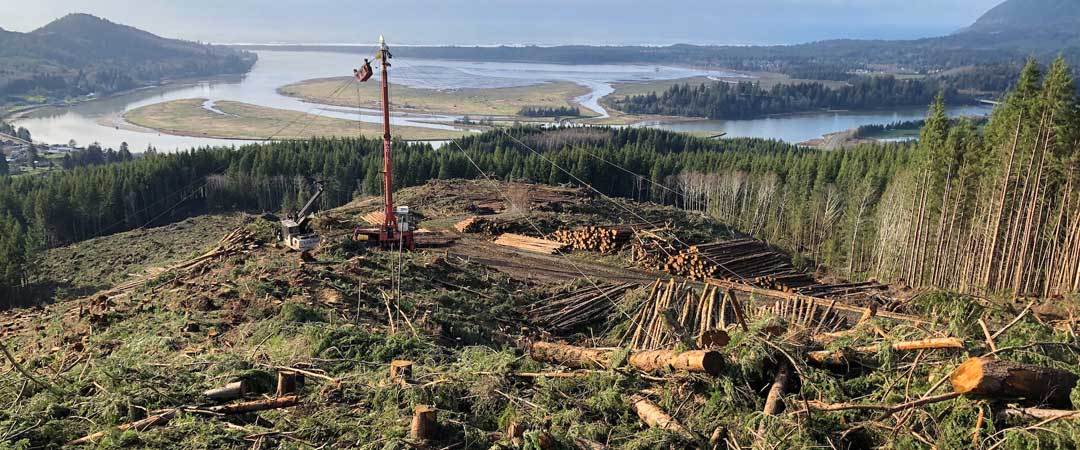New Release:
Wheeler"s backyard to receive chemical soup again
For more information:
Nancy Webster, rockawaycitizen.water@gmail.com 503-355-2516
Stimson Lumber Company registered with the Oregon Department of Forestry to ground-spray pesticides on about 93 acres of their clearcut land (outlined in blue on the map) that is within close proximity to Wheeler, Oregon residential areas.
This application of pesticides can occur any time between Tuesday, July 14, 2020, and December 31, 2020. Pesticides to be used include aminopyralid and metsulfuron methyl, glyphosate,sulfometuron methyl Chemical Carrier(s): water Chemical Additive(s): Syl-Tac.
There has been limited research as to impacts from potential synergy when these pesticides are combined.
When asked, Oregon Department of Forestry spokesman Bryce Rodgers emailed, “The notification has been reviewed and meets the requirements of the Forest Practice Act. The notification is for a backpack spray operation. A representative from ODF and ODA will be on site during the application to make sure the operation is in compliance.”
Recent legislation created regulations increasing buffers around streams and communities for aerial spraying—but not ground spraying. That is a hopeful sign for improving watershed protection, however there is still the potential for chemical impacts on water and air quality.
A well informed Wheeler resident has been told that Stimson hasn’t yet set a specific date to begin the backpack spraying. That means there’s still time to call Jacob Hilger at Stimson Lumber Company at 503-842-4056 to be added to an e-mail list to receive 24 hour notice for this upcoming Wheeler spray. Also call Bryce Rodgers at the Oregon Department of Forestry (503-325-5451) to ask for routine 24 hour notices so that those “sheltering in place” due to the pandemic can make plans to vacate their homes during the spray operation.
A minimum 24-hour notice before spraying is absolutely necessary to safeguard families, friends, gardens, and pets. Also, it is essential to know the exact spraying schedule in order to do a health survey of people who live nearby and accurate testing of water for the presence of these pesticides.
Those involved with North Coast Communities for Watershed Protection are also concerned about social justice impacts: Will workers who will be doing the spraying get adequate eye, skin, and respiratory protection? Will Stimson provide them with that equipment? Contract workers are often without health insurance. They could also be at a high risk of contracting Covid-19 at the worksite, especially if they are transported as a group in vans.
Although aerial spraying would be worse than ground spraying, a professor of biology and environmental toxicology says there are still definite reasons for concern:
- This spray operation will be very close to homes and gardens and on a hillside above the town. Spray droplets are volatile and can drift down from the clearcut, close to people, and into water sources. Also, when it is breezy, pesticide spray can drift away from the application site.
- Some of these pesticides tend to be very persistent in the soil. Since this clearcut already has very little vegetation (and after the spraying, it will have less), the chemicals adhering to the soil can then wash downhill into streams, salt marshes and, eventually, into the Nehalem River. Lisa Arkin from Beyond Toxics commented, "The main concern I have is with the bio-persistence of aminopyralid. I worry about it ending up in stream sediment or dust particles.”
- Some of these chemicals can remain volatile for as long as a year, and then revolatilize into the air in temperatures above 84 degrees. On windy days this contaminated soil can end up in water sources and adjacent neighborhoods. The listed pesticides can range in toxicity from being toxic to beneficial soil organisms to probably carcinogenic to humans, in the case of glyphosate.
Studies show that minute amounts of sulfometuron methyl (brand name: OUST) can disrupt plant reproduction, especially peas, potatoes, and tomatoes. Drift from roadside and noxious weed applications of Oust have resulted in widespread crop damage totaling millions of dollars. It can cause severe eye irritation and may cause some skin sensitization.
As citizens in NCCWP learn about these chemicals, how they persist in the environment, destroy entire ecosystems, and risk both public and environmental health, it becomes clear their use needs to stop. Current forestry practices are risking our future and the future of a habitable Earth.
TAKE ACTION by calling Jacob Hilger at Stimson Lumber Company (503-842-4007), Bryce Rodgers at the Oregon Department of Forestry (503-325-5451) and Governor Kate Brown (503-378-4582).
North Coast Communities for Watershed Protection (formerly known as Rockaway Beach Citizens for Watershed Protection), is a grassroots group seeking better protections for the water we drink, the air we breathe, and the forest we love.

